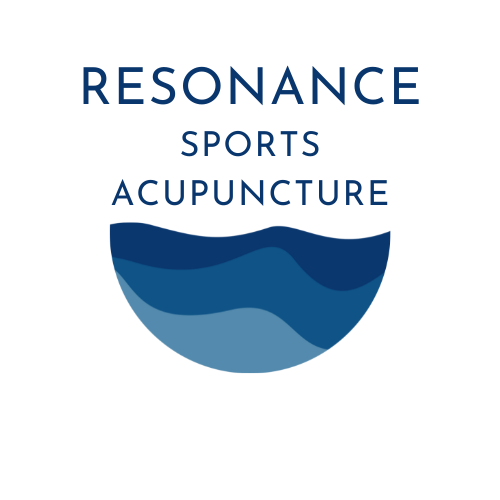treating tendonitis
Treating Tendonitis
Sports acupuncture specifically targets injured tissue such as inflamed tendons or muscle groups contributing to the injury. By nature, tendons receive little blood flow compared to other tissues in the body. Applying acupuncture to injured tendons will stimulate fresh blood flow to the tendons which will instigate a local healing response by way of nutrients and oxygen being delivered to the area.
Treating Tendonitis with Sports Acupuncture
Understanding Tendonitis
Tendonitis can develop due to overuse or repetitive movements, leading to microtears in the tendons. Common areas affected by tendonitis include the shoulders, elbows (tennis elbow or golfer's elbow), knees (patellar tendonitis), and Achilles tendons. The pain and discomfort associated with tendonitis can range from mild to severe, making it challenging to engage in physical activities or even perform everyday tasks.
How Sports Acupuncture Works
Sports acupuncture, also known as orthopedic acupuncture, is an acupuncture specialty rooted in Traditional Chinese Medicine (TCM) that involves the insertion of thin, sterile needles into specific acupuncture points or anatomical locations on the body. Sports acupuncture specifically targets injured tissue such as inflamed tendons or muscle groups contributing to the injury. By nature, tendons receive little blood flow compared to other tissues in the body. Applying acupuncture to injured tendons will stimulate fresh blood flow to the tendons which will instigate a local healing response by way of nutrients and oxygen being delivered to the area while waste products and toxins are flushed out. This is a very effective treatment approach that has very little side effects.
Some of the Benefits of Sports Acupuncture for Tendonitis
1. Pain Relief: One of the primary benefits of sports acupuncture for tendonitis is its ability to provide immediate pain relief. The insertion of acupuncture needles triggers the release of endorphins, the body's natural painkillers, which can help reduce pain and discomfort associated with tendonitis.
2. Inflammation Reduction: Acupuncture has been shown to reduce inflammation in the body. In the case of tendonitis, this can help decrease the swelling and irritation of the affected tendons, promoting the healing process.
3. Improved Blood Circulation: Acupuncture enhances blood circulation to the injured area, which can aid in delivering essential nutrients and oxygen to the damaged tendons. Improved blood flow also helps remove waste products and toxins, further expediting the healing process.
4. Muscle Relaxation: Tendonitis often leads to muscle tension and tightness. Acupuncture can help relax the muscles surrounding the affected area by resolving trigger points, reducing strain on the tendons and facilitating recovery.
5. Customized Treatment Plans: As usual, I assess each individual's condition and tailor treatment plans to address their specific presentation. This personalized approach ensures that the treatment is effective and aligned with the patient's goals.
6. Minimal Side Effects: Unlike some pharmaceutical treatments, sports acupuncture typically has minimal side effects. Patients may experience temporary soreness or bruising at the needle insertion sites, but these side effects are usually mild and short-lived.
Tendonitis can be a debilitating condition that interferes with daily life and physical activity. While traditional treatments like rest, compression, and physical therapy can be effective, sports acupuncture offers a complementary approach that can accelerate the healing process, alleviate pain, and help you return to your favorite activities.
Dry Needling vs Acupuncture
Dry Needling versus Acupuncture
A question I hear all the time: What is the difference between dry needling and acupuncture?
Briefly stated, dry needling is orthopedic acupuncture.
Many people think of meridian based acupuncture when they think of acupuncture. However, there are many types and techniques of acupuncture depending on the specialty and training of the acupuncturist. Most orthopedically trained acupuncturists perform dry needling. Both modalities use the same types of acupuncture needles. Dry needling is a type of trigger point release using an acupuncture needle.
Some differences between meridian based acupuncture and dry needling are the size of the needles and intended outcome and what we are treating. For example, if someone comes in with rotator cuff tendonitis, we are going to target some of the muscles in the rotator cuff. However, many of these common muscle trigger point locations are actually acupuncture points. In a sports medicine context, our goal with needling these muscles will typically be to release the trigger point to improve the function of the muscle versus stimulate the neuro-muscular tissue around the acupuncture point for an internal medicine imbalance.
This is a primary distinction between dry needling and meridian based acupuncture: the needling technique.
Often a thicker needle diameter will be used when a dry needling technique is needed compared to meridian based acupuncture.
We can achieve fast and lasting results with dry needling which results in pain reduction, the muscle returning to a healthier functional state and better performance.
I often hear the question, “but doesn’t dry needling hurt a lot?”
The short answer is it can hurt some, but it doesn’t have to.
A better description is that there might be some temporary discomfort in exchange for lasting relief. This goes back to the practitioner and their training and technique.
It is very important to me that my patients are always comfortable. I will communicate to you what I will be doing and ask for your feedback because if you are in a stressed or apprehensive state, this interferes with the purpose of receiving treatment. I have worked with a variety of patients. Some prefer a more active, stimulating approach to needling, and some do better with a more gentle, slow approach. Our communication is important to guide your treatment.
As a licensed acupuncturist and sports medicine specialist, I have extensive training in acupuncture orthopedics and dry needling where I often include electro-acupuncture, neuro-acupuncture and other orthopedic techniques. My goal is to help you recover faster from injuries, avoid more serious complications or surgery, and to improve your athletic performance by preventing injuries and helping your body perform the best it can.


